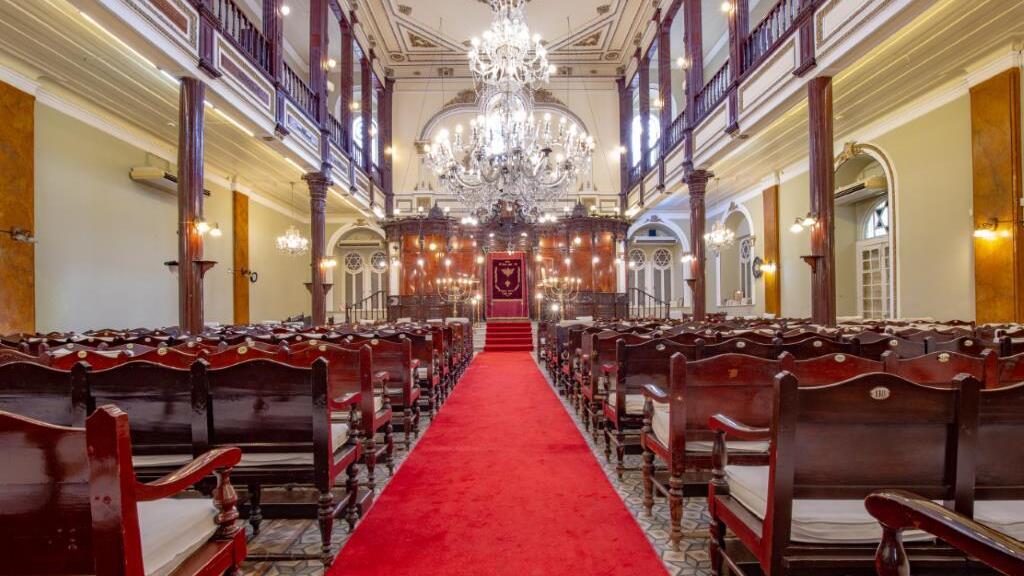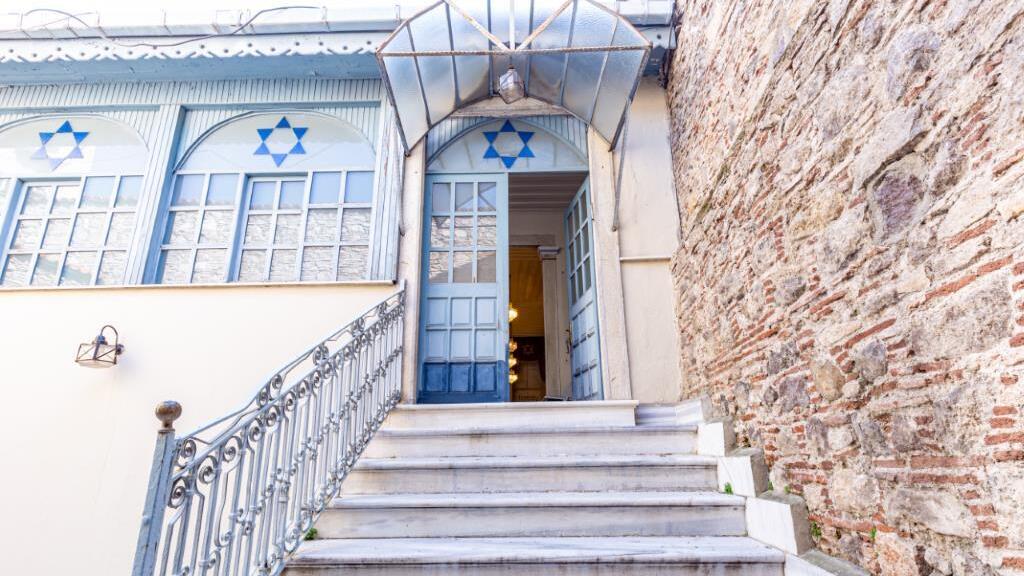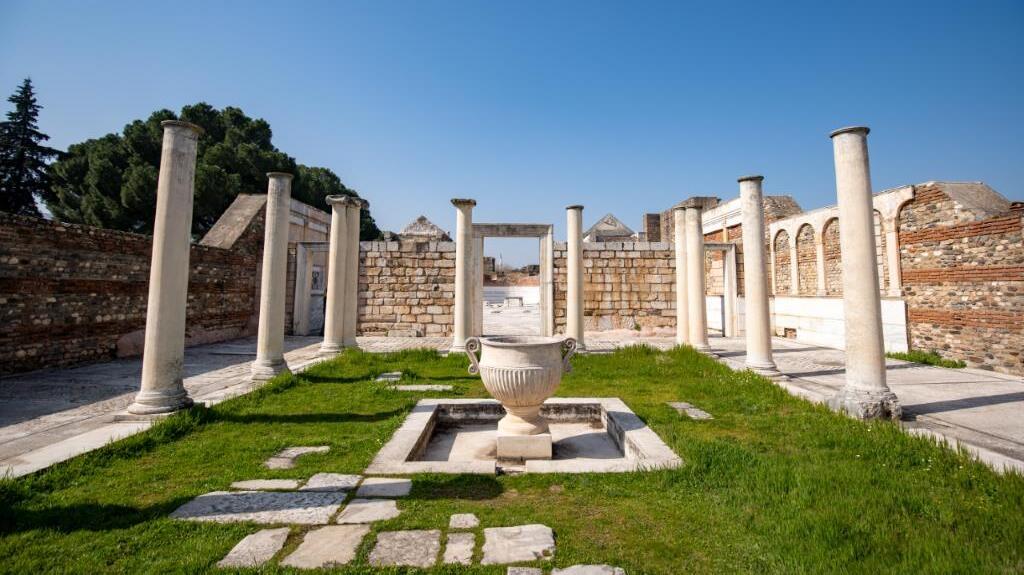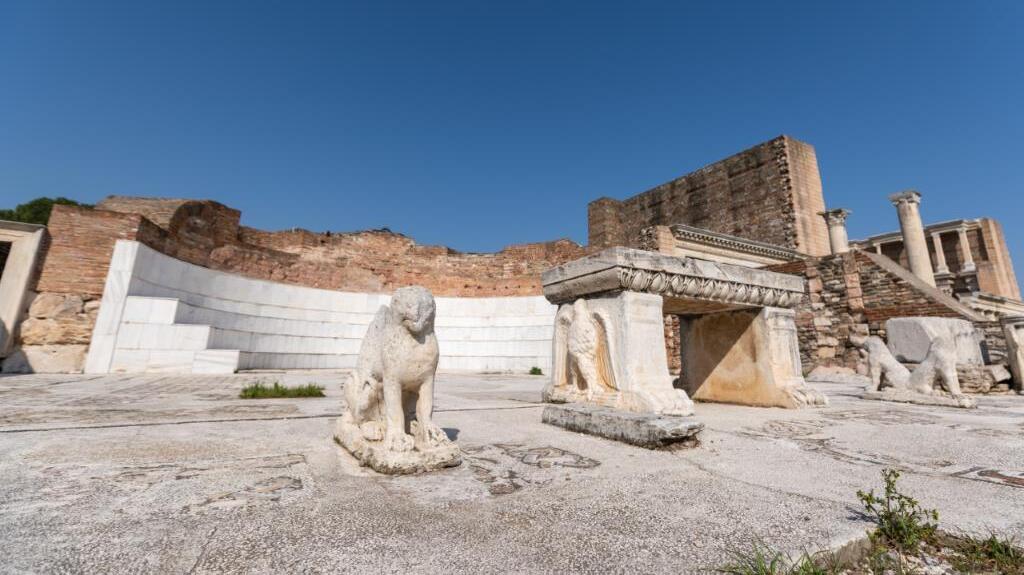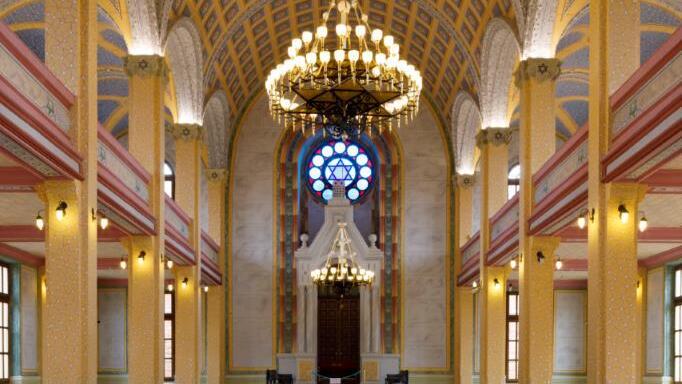Getting your Trinity Audio player ready...
According to current estimates, the Jewish community in Turkey numbers around 15,000 people; but during its peak, the country was home to hundreds of thousands of Jews who left behind a heritage and Jewish sites that still exist today.
More stories:
In recent years, many Israelis have traveled to Morocco, to visit heritage sites and the tombs of the righteous, among other reasons. Now, a new trend is emerging of visiting Turkey's Jewish historical sites.
According to tour guide Nissim Benkoyan, an expert on Jewish heritage in Turkey, the Jewish people had a significant role in the history of the city of Izmir, and they were part of a thriving community with cultural customs and a long tradition. For example, many Jews participated in the city's rich trade enterprises. Benkoyan says that the earliest Jewish presence in Izmir dates back to the 4th century BCE, during the time of Alexander the Great. With the Ottoman Empire's occupation of Izmir in 1424, the Jewish community settled in surrounding villages. The community became organized and settled around 1620, under the leadership of Rabbi Yosef Eskcapa, until the city eventually became a commercial center. There were six synagogues in Izmir in 1620.
In the early years of the 20th century, there were approximately 50 synagogues and Jewish schools in the city. Due to the emigration of around 30,000 Jews from Izmir to the United States and South America between 1908 and 1920, and the immigration to Israel in 1948, the Jewish population in Izmir dwindled to around 2,500. Today, the Jewish population in the city is estimated to be around 1,200 people.
What Jewish heritage can be seen today in the streets of Izmir?
"Traditional Jewish heritage can be found when strolling through the streets and seeing Zeeuwse bolus in every corner. Zeeuwse bolus is a pastry that has become a symbol of Izmir and is originally a Jewish delicacy. The city holds a special Zeeuwse bolus festival every year to celebrate this food. The same goes for Sobia, which is a Jewish beverage made from melon seeds. Culturally, Sephardic songs are increasingly heard in various national and international events in Izmir."
Have the majority of cemeteries, synagogues and other buildings been preserved and are they in good condition?
"The central part of the city's Jewish heritage is located within the Jewish quarter and includes nine synagogues built in the typical Sephardic architectural style. Over the past 10 years, we have managed to restore and preserve three out of five synagogues that were on the verge of collapse. Currently, we are working on rehabilitating two more synagogues, making these sites accessible to visitors. The architects will complete the implementation plans for these two synagogues by the end of this summer. Each synagogue has its own unique story. Walking from one synagogue to another allows you to immerse yourself in an authentic historical and cultural journey within the social context of the old Jewish quarter, where Jewish life once lived."
What is the attitude of the local residents when they come into contact with groups of Israelis, especially religious ones?
"There has been a significant increase in incoming tourism, including religious tourists. We see them freely wandering around the old Jewish quarter, visiting synagogues and other sites. We haven't heard of any negative incidents or attitudes toward them. The local residents warmly welcome tourists, knowing that, in the long run, they will benefit from them. Furthermore, shop owners and workers in the area often participate in the cultural activities we organize. We have also established a tradition of celebrating Tu B'Shevat together with our Muslim neighbors."
How easy or difficult is it to do a kosher tour in all the places you take groups to in Turkey?
"Kosher food is an issue in Turkey. Sometimes, you can only find kosher food available in Istanbul. In Izmir and other sites, kosher eaters mainly eat vegetables and fish unless organized groups make special arrangements in advance."
Do you have, similar to Morocco, tombs of the righteous or folklore surrounding specific Jewish sites?
"The ancient Jewish cemetery contains the graves of prominent individuals such as Rabbi Yosef Escapa, Abraham Palacci, and Haim Palacci. They were considered geniuses of the generation who were honored by rabbis worldwide. Their followers celebrate the anniversary of their deaths in the old Jewish cemetery. In addition, there is the building of Haim Palacci's yeshiva, which has become the Beit Hillel synagogue.
"Another focal point is the house of Sabbatai Zevi. In light of his great influence on Jewish thought and his life being a source of intense controversy, his house attracts a lot of attention from visitors."
The first synagogue in Europe
One of the interesting Jewish heritage sites in Turkey is the Sardis Synagogue, the first synagogue in Europe and in Turkey, located in modern-day Manisa. The Sardis Synagogue is considered the third temple of the Jews, built after the Temple of Solomon, and the Dura-Europos Synagogue in Syria. Some believe that the origin of the Sephardic branch of Jews is in the Sardis Synagogue. The synagogue features mosaic floors, impressive columns, wall paintings, and a hall with a pool and a fountain.
Historically, in the late Middle Ages, most Jews who were expelled from Western Europe sought refuge in the Ottoman territories where Jewish communities existed. Jewish communities arrived in Anatolia on ships sent by the Ottoman Empire and settled primarily in cities such as Istanbul, Izmir, Edirne and Bursa. In Istanbul, there are still various synagogues that belong to Jewish communities in Asia and Europe, including the largest Sephardic synagogue in Istanbul, the Neve Shalom Synagogue. The most popular synagogues in Istanbul are the Ahrida and Yanbol synagogues in the Balat neighborhood, the Ashkenazi Synagogue of Istanbul in the Karakoy neighborhood, and the Etz Ahayim Synagogue in Ortakoy.
Synagogues with historical heritage
Edirne and Bursa are two other notable cities in Turkey known for their Jewish communities. These cities, which hosted the first Jewish communities in the Ottoman territories, have a rich Jewish heritage. In Edirne, a Jewish neighborhood and 14 independent synagogues were established. When the synagogues were destroyed in the Great Fire of Edirne in 1905, the Great Synagogue of Edirne was built in their place. The building was designed in the style of the historic Leopoldstädter Temple, the largest synagogue in Vienna, and planned by the French architect Françoise Depré.
In Bursa, another city where Sephardic Jews reside, are the Gerush Synagogue, Mayor Synagogue, and Etz Ahayim Synagogue. The Gerush Synagogue was built for the early Sephardic communities from Spain, and the Etz Ahayim Synagogue stands out as the first synagogue built during the Ottoman period.


